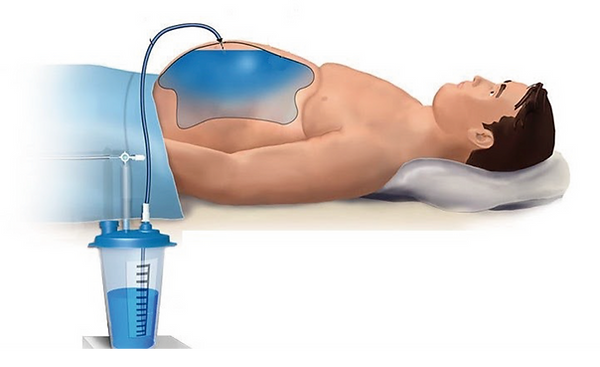
An endoscopy is a procedure to examine the upper digestive system with a camera attached to a tube. It is used to evaluate symptoms such as nausea, vomiting, abdominal pain, difficulty swallowing, digestive bleeding, anemia, diarrhea, or suspected cancer.
Preparation
-
8 hours fast
-
Tell the doctor about your chronic illnesses and medications you use
-
Get accompanied by an adult to assist you at the end of the procedure.

Procedure lenght: 10 minutes
Type of anesthesia: IV sedation

Outpatient stay: 60 – 90 minutes

Capsule Endoscopy
It is a test that involves swallowing a small capsule with a camera, which captures detailed images of the small intestine to diagnose diseases such as Crohn's disease, anemia and persistent bleeding and tumors. It can serve as an option for the prevention of colon cancer.
Indications:
-
8 hour fast
-
In case of small intestine evaluation: Take one sachet of Pepsane half an hour before the procedure.
-
In case of evaluation of the small intestine and colon: Requires a laxative the day before, in addition to abundant water intake and an extra dose of laxative on the day of the procedure.

4 to 10 hours

Outpatient stay: 30 minutes for placement, capsule advancement is checked at intervals.

Type of anesthesia: local
A colonoscopy is an exam to detect abnormalities in the colon and rectum. During a colonoscopy, a tube with a camera is inserted through the rectum to allow a view of the inside of the entire colon. It is used to evaluate abdominal pain, rectal bleeding, chronic constipation, chronic diarrhea, and suspected colon cancer, as well as surveillance for colon polyps.
Indicaciones
-
8 hours fast
-
Tell the doctor about your chronic illnesses and medications you use
-
Requires special diet and laxative the day before
-
Get accompanied by an adult to assist you at the end of the procedure.

Procedure lenght: 20-40 minutes
Type of anesthesia: IV sedation

Outpatient stay: 90 minutes

High Resolution Esophageal Manometry
It is a test that uses a probe through the nose with multiple pressure sensors. It is used to evaluate movement disorders of the esophagus, such as achalasia, dysphagia, or spasm esophageal.
Indications:
-
8 hour fast
-
Come with prior endoscopy Inform the doctor of the medications used since some may interfere with the procedure.

30 minutes
Type of anesthesia: local

Outpatient stay: 30 to 45 minutes

PH Meter with 24 hour Impedancy
It is a procedure that measures the pH and the movement of liquids and gases in the esophagus. It consists of a nose tube connected to a portable monitor; and it is the best test for diagnosing gastroesophageal reflux. The procedure lasts 24 hours, during which the patient can continue his normal activities.
Indications:
-
8 hour fast
-
Come with prior endoscopy
-
Have at least 14 days without taking omeprazole (or similar medications)
-
Prior to the study, a measurement of the esophagus is performed using manometry (at no extra cost).
The procedure lasts 24 hours, allowing for normal daily activities while wearing a portable monitor.

Type of anesthesia: local

Outpatient stay: 30 to 45 minutes

Argon Plasma Therapy
It is a medical procedure that uses a flow of argon gas and an electrical current to coagulate or cauterize tissues. It is used in the treatment of lesions in the gastrointestinal tract, such asl Barrett´s esophagus, bleeding, tumors and gastric bypass patients who gained weight.

It is usually performed in a single outpatient session, allowing th patient to return to normal daily activities shrotly thereafter.
Paracentesis
Paracentesis is a procedure in which a needle is inserted into the abdomen to remove fluid that has accumulated in the abdomen. It can be performed as a diagnostic approach or for treatment.
It is used for the evaluation of new-onset ascites, management of tense or refractory ascites, and evaluation of ascites in patients with fever, abdominal pain, or hepatic encephalopathy.
Indicaciones
-
Does not require fasting
-
Medical evaluation is required prior to the procedure.

Procedure lenght: 60-120 minutes
Type of anesthesia: Local anesthesia

Outpatient stay: 120 minutes

Intragastric Balloon
To reduce appetite and having satiety with less food a balloon is placed in the stomach using endoscopy. It offers the advantage of avoiding bariatric surgery and is removed in 6 to 12 months.
It is a safe endoscopic procedure for weight loss. Patient’s body mass index should be greater than 25 and can lose up to 18% of their body weight. The success rate improves when the patient adheres to a diet and workout program, as well as psychological evaluation (if needed).
Indicaciones
-
8 hour fast
-
Medical evaluation is required prior to the procedure.
-
Get accompanied by an adult to assist you at the end of the procedure.

Procedure lenght: 20 minutes
Type of anesthesia: IV sedation

Outpatient stay: 2-3 hours

Make an appointment
322 .403. 3153
Monday to Friday
Upper Endoscopy
Colonoscopy
José Francisco Barrientos Medina
Gastroenterólogo
